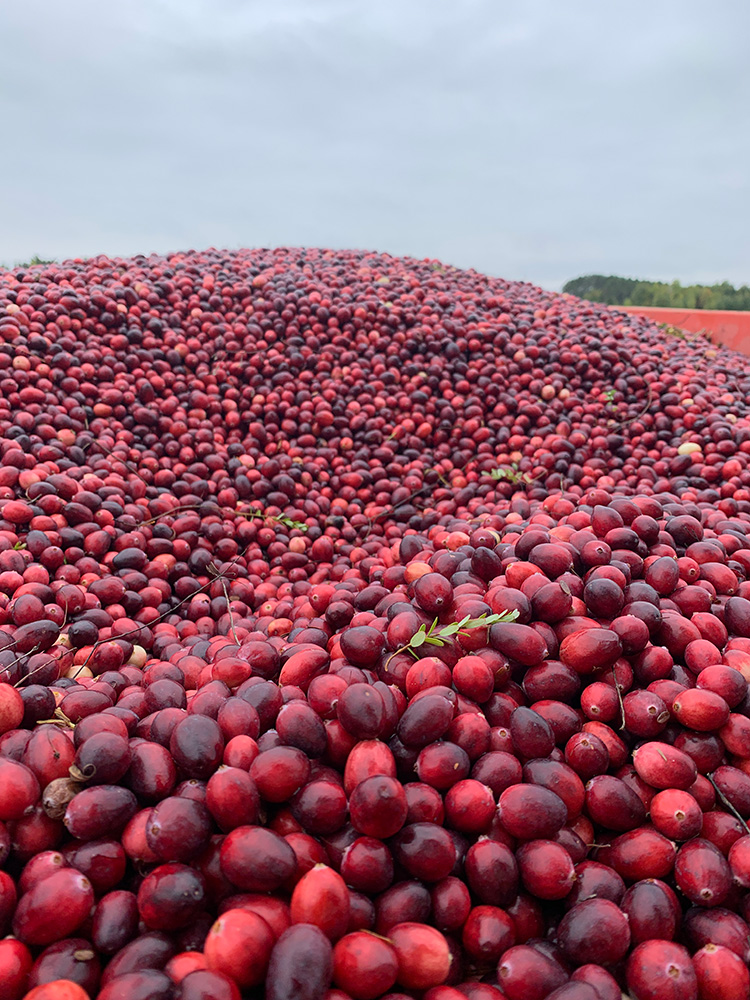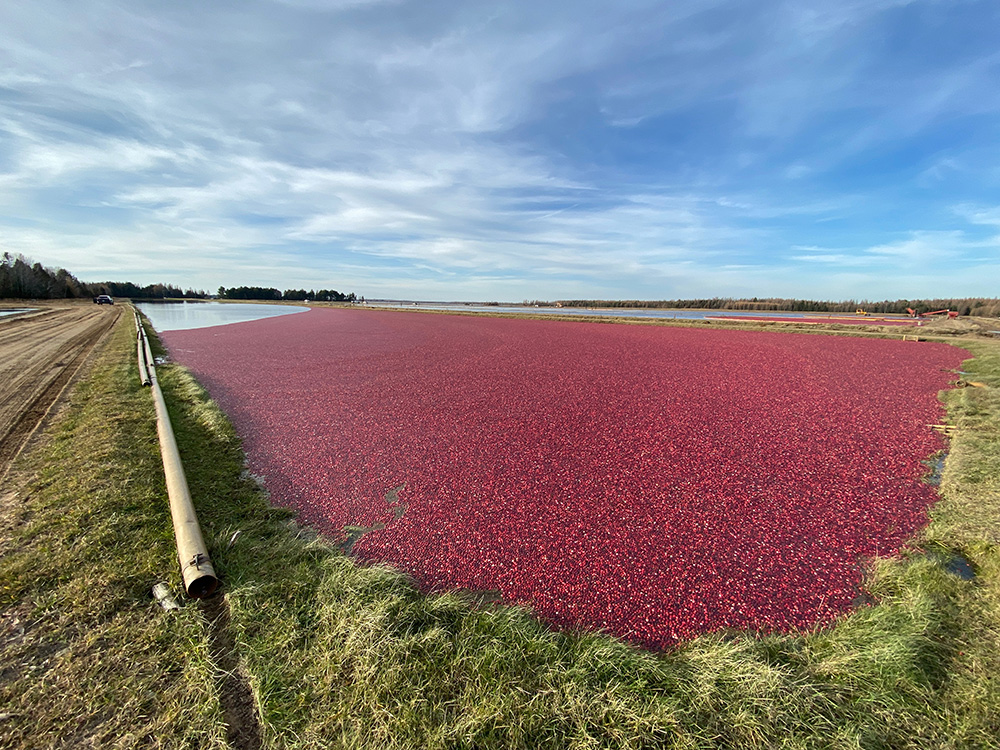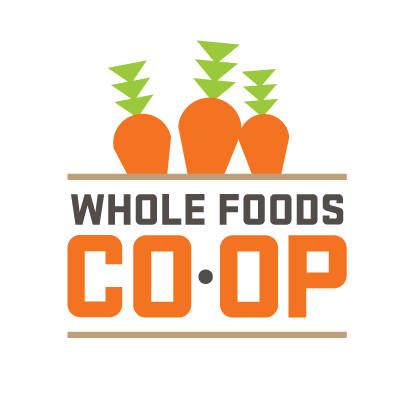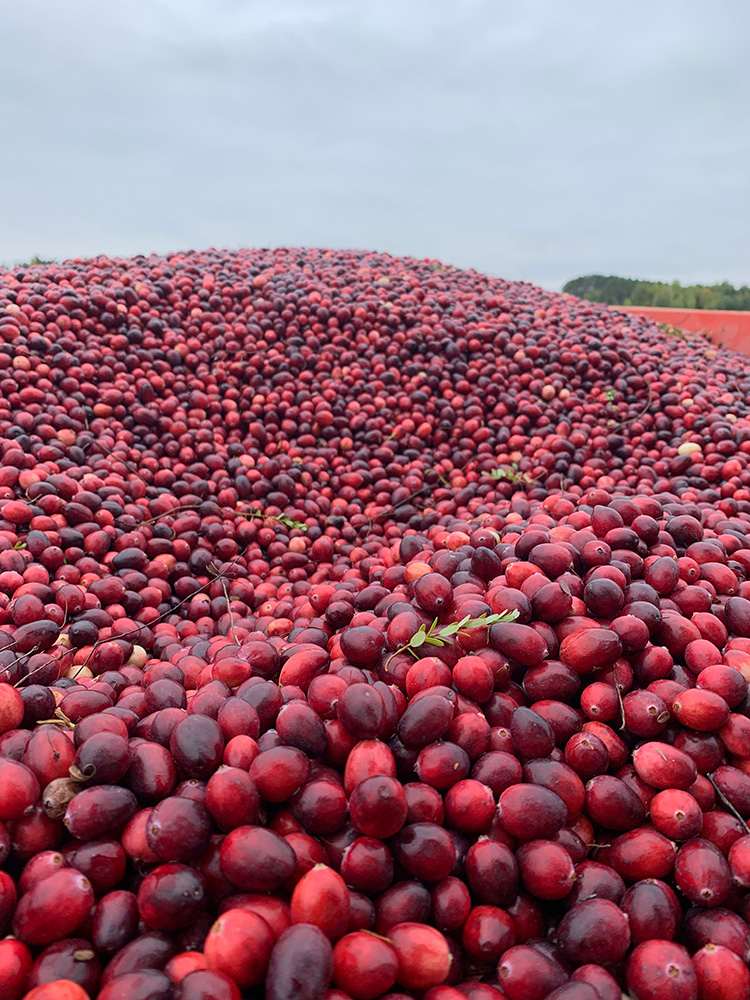A BERRY SUSTAINABLE LOCAL MARSH
The cranberry is one of the most unsung heroes of autumn and holiday feasts. The bright red fruit, with a combination of sour and sweet, invigorates the taste buds. When the mercury begins to fall, the cranberry harvest starts at one of our favorite cranberry farms, James Lake Farms. Just a couple of miles south of Three Lakes, Wisconsin, James Lake Farms is operated by John and Nora Stauner with their children, Ben and Sarah, and manager Tom Drozd, who pride themselves on their commitment to sustainable farming practices and providing the community with high-quality certified organic cranberries.
The team at James Lake Farms can be rightfully proud of their cranberry operation. From their exceptional care that fuels the cultivated fields to their masterful cranberry harvesting, they ensure the longevity of their farm. The cranberry marshes were started in the late 1940s, and many of the current cranberry beds date from this time. The Stauner family began the process of organic certification for their 189-acre farm in 2006 and achieved certified organic status in 2018. John informed us, “Converting to organic was a business decision because we needed to find a value-added niche market, but it was also a decision driven by our desire to grow something that was good for people and the land on which it was grown.” James Lake Farms collaborates with MegaFood Vitamins, supplying them with the same great organic berries we have at the Co-op. John let us know that MegaFood is also a company that values preserving the natural quality of food and the land it’s cultivated on, making for a great partnership.
A good farmer does everything they can to produce a harvest every year. A great farmer gets a yearly harvest while improving the land and taking time to care for all who dwell on the land, flora, and fauna included. Pollinators, the little creatures that fly, buzz, and walk, transferring pollen from flower to flower, are necessities the farm can’t do without. John shared a bit of his growing philosophy with us, “We use such things as composts for fertility and neem-oil-based products for pest control. I like to use the analogy that we are managing an ecosystem on the marsh in order to get as many cranberries as possible.” Collaborating with seasoned beekeepers, the Stauners ensure the well-being of native pollinators, turning delicate cranberry blossoms into the beloved teardrop-shaped fruit.
There are different varieties of cranberries, called cultivars, each with unique characteristics. Depending on their type, cranberries can vary in size, shape, and even ripening time.
Cranberries grow low to the ground, with long trailing stems that root at various points. To maintain healthy, upright growth and ensure good sunlight exposure, perennial cranberry vines must be replaced occasionally. The oldest vines at James Lake Farms have been replaced or “renovated” with industry-developed hybrids that grow harmoniously with organic farming practices. Three years of tending new plants are required before they develop a dense, even canopy that bears fruit.
Harvesting cranberries can be a complex process that relies heavily on the weather due to the season’s unpredictability. A fascinating insight is that the reproductive buds of cranberries form on the plants in August of the previous year. This underscores the importance of sustainable farming practices. As the crew harvests the current crop, utmost care must be taken to avoid damage to the following year’s harvest. To ensure the best quality product, James Lake Farms conducts two harvests, fresh or frozen, depending on the cranberry’s destination. The first method involves gently plucking the berries directly from the vine, which is ideal for fresh produce markets. The harvester reaches into the vines and grasps a cluster of ripe berries. Ripe cranberries have air pockets that help them release from the stems. Plucking preserves the fruit’s freshness for an extended period.
After collecting the first harvest of berries to sell fresh, the cranberry beds are flooded, and the berries rise to the surface, creating a vivid crimson sea of berries to be collected by a floating harvester. Floating is a picturesque and efficient method for harvest. James Lake Farm utilizes this method for berries they freeze.
In recent years, James Lake Farms has been harvesting over 2 million pounds of organic cranberries per year. For reference, an empty 20 foot shipping container typically weighs just under 5,000 lbs. If you imagine 400 containers stacked together, the total weight would be approximately 2 million pounds. That’s a lot of cranberries!



During the unique and awe-inspiring harvest, James Lake Farms offers tours and sells freshly picked cranberries; John and his family love to see cranberry fans in person. On Saturdays during October, join John to explore the marsh and have your pollinator and cranberry questions answered.


